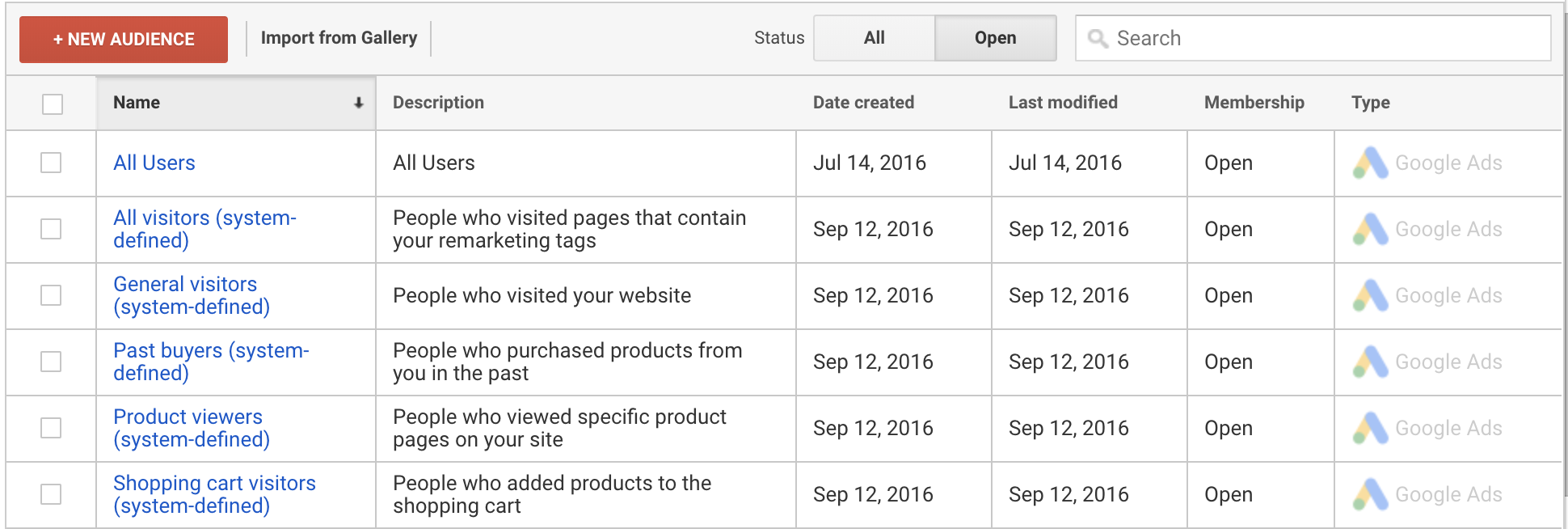Comprehending the Power of Remarketing In Google Analytics
Using Remarketing in Google Analytics: A Comprehensive Overview
Utilizing remarketing in Google Analytics supplies companies a tactical edge in getting to out to prospective clients. This guide will shed light on the vital steps entailed in taking advantage of the complete capacity of remarketing in Google Analytics, leading to boosted advertising and marketing results.
Understanding Remarketing in Google Analytics
Remarketing in Google Analytics permits businesses to purposefully target individuals that have actually formerly communicated with their internet site or mobile application. By leveraging information from Google Analytics, companies can create tailored remarketing checklists based on user actions, such as web pages visited, activities taken, or certain goals attained. This powerful tool allows services to re-engage with customers that have revealed passion in their product and services, eventually raising the likelihood of conversion.
Recognizing the different kinds of remarketing techniques is important for a successful campaign - What Is “Remarketing” In Google Analytics?. Google Analytics supplies different alternatives, including conventional remarketing, vibrant remarketing, and remarketing listings for search advertisements (RLSA) Each kind serves a special function and can be customized to satisfy certain marketing purposes
In addition, evaluating the efficiency of remarketing campaigns is vital for enhancing outcomes. Google Analytics gives beneficial insights into the efficiency of different remarketing approaches, permitting businesses to make data-driven choices and improve their targeting method. By constantly readjusting and checking remarketing initiatives based on analytics data, services can maximize ROI and drive success in their advertising initiatives.
Setting Up Remarketing Projects

After establishing target market lists, the following step is to link Google Analytics with Google Advertisements. By connecting these 2 systems, services can effortlessly move audience lists from Google Analytics to Google Advertisements for remarketing purposes. This integration enables for more specific targeting and better campaign performance.
Once the accounts are connected, services can create remarketing projects in Google Ads making use of the audience lists previously specified in Google Analytics. These campaigns can be customized with particular advertisement creatives, messaging, and bidding methods to effectively re-engage with previous visitors and drive conversions. By adhering to these steps, companies can utilize the power of remarketing to boost their marketing initiatives and enhance ROI.
Making Use Of Audience Division Techniques

Predefined segments in Google Analytics allow you to promptly evaluate typical target market groups like brand-new users, returning individuals, or customers who completed a details objective on your web site. Custom sectors, on the various other hand, allow you to develop one-of-a-kind segments based upon details requirements that are essential to your business objectives. Dynamic remarketing lists immediately change based upon customer actions, showing individualized advertisements to individuals that have connected with your website specifically means.
Studying Remarketing Efficiency Metrics
Upon evaluating the performance of remarketing campaigns in Google Analytics, the additional info evaluation of essential performance metrics supplies beneficial insights right into target market interaction and conversion rates. By diving right into metrics such as click-through prices (CTR), conversion rates, price per acquisition (CERTIFIED PUBLIC ACCOUNTANT), and return on advertisement spend (ROAS), online marketers can evaluate the success of their remarketing efforts. Examining these metrics makes it possible for online marketers to maximize projects, improve audience targeting, and designate budgets effectively to enhance general remarketing performance.
Maximizing Remarketing Approaches
When refining remarketing methods in Google Analytics, concentrating on target market division is paramount for attaining campaign success. By splitting your audience into specific segments based upon their actions, demographics, or passions, you can customize your ads better to every team. This targeted strategy raises the possibility of engaging individuals that use this link have already shown passion in your service or products, bring about higher conversion rates.
Another critical element of maximizing remarketing techniques is constantly screening and refining your projects (What Is “Remarketing” In Google Analytics?). A/B screening various advertisement creatives, messaging, or deals can assist you recognize what reverberates ideal with your target market and drives one of the most conversions. By analyzing the performance of these tests in Google Analytics, you can make data-driven decisions to optimize your remarketing efforts even more
Additionally, leveraging dynamic remarketing can substantially improve your campaign results. This feature allows you to show personalized advertisements to users based upon their previous communications with your website, showcasing solutions or items they have actually previously seen. By providing tailored web content to individuals based on their interests and behaviors, dynamic remarketing can aid increase involvement and drive conversions.
Conclusion
Finally, taking advantage of remarketing in Google Analytics is a critical technique to target individuals who have actually previously involved with an internet site. By producing tailored audience lists and look what i found using audience division methods, companies can maximize remarketing campaigns for increased conversion prices. Assessing efficiency metrics and continuously enhancing methods are important for maximizing the performance of remarketing efforts.
Google Analytics uses various choices, including typical remarketing, dynamic remarketing, and remarketing checklists for search ads (RLSA)After establishing up audience checklists, the next step is to connect Google Analytics with Google Advertisements. By linking these 2 platforms, businesses can flawlessly transfer audience lists from Google Analytics to Google Ads for remarketing objectives.Once the accounts are linked, businesses can develop remarketing campaigns in Google Ads utilizing the target market details previously defined in Google Analytics.When refining remarketing methods in Google Analytics, concentrating on target market segmentation is vital for attaining campaign success.